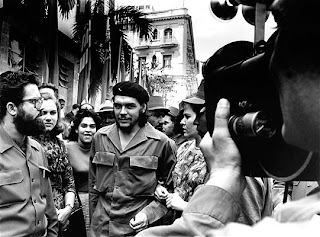On the 5th of March 1960, 32 year old fashion photographer Alberto Korda took a snapshot of what would become one of the most widely recognized images in history; the Guerrillero Heroico. The image is a portrait of Argentinean Marxist rebel leader Che Guevara. To put the photo in context; Che had just arrived at the scene of an exploded Belgiuan ship at the port of Havana which had killed 136 men. Alberto Korda managed to capture the somewhat ‘dignified disgust’ or anger in Che’s facial expression. How you interpret the Guerrillio Heroico is up to you, but one thing is certain, this image will continue to be reproduced for years to come because it is intense, and powerful.
Guerrillero Heroico still resonates 5 decades later, and it is found on everything from coffee mugs to t-shirts. Alberto Korda’s famous masterpiece hung in his bathroom for 7 years before an Italian publisher by the name Giangiacomo Fetrinelli visited him in Havana. It has become a symbol for rebellion, and in some cases, hope. Due to Fidel Castro’s refusal to sign the Berne Convention, Korda couldn’t receive any royalties for his intellectual property, until the early 1990s when a London court prevented the use of the image in a Smirnoff advertising campaign for copyright reasons. Alberto Korda passed away in Paris in 2001, but because of his strong image, this revolution will continue forever.





